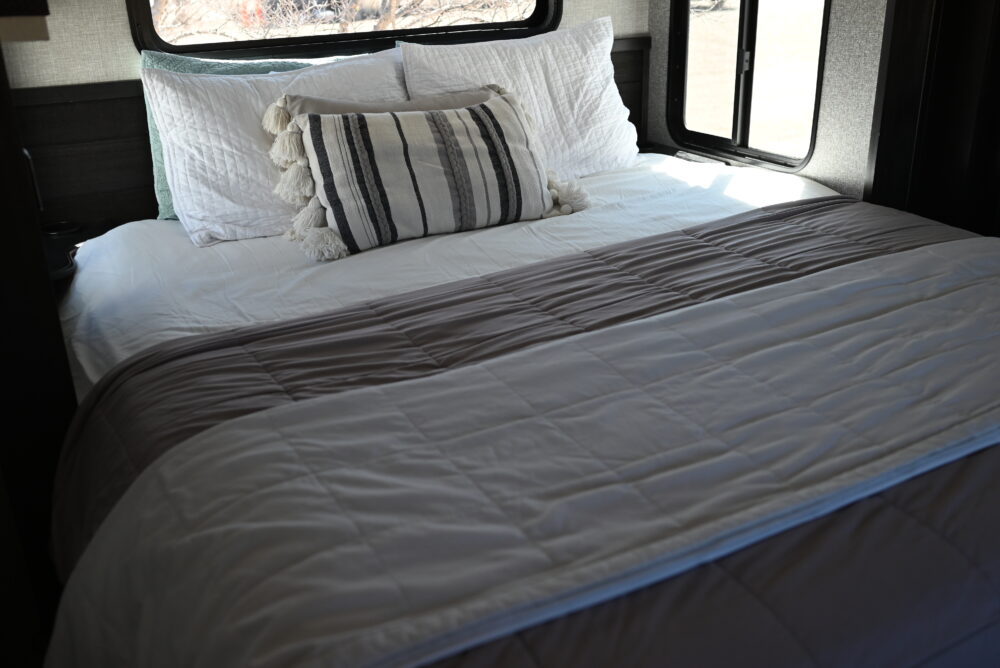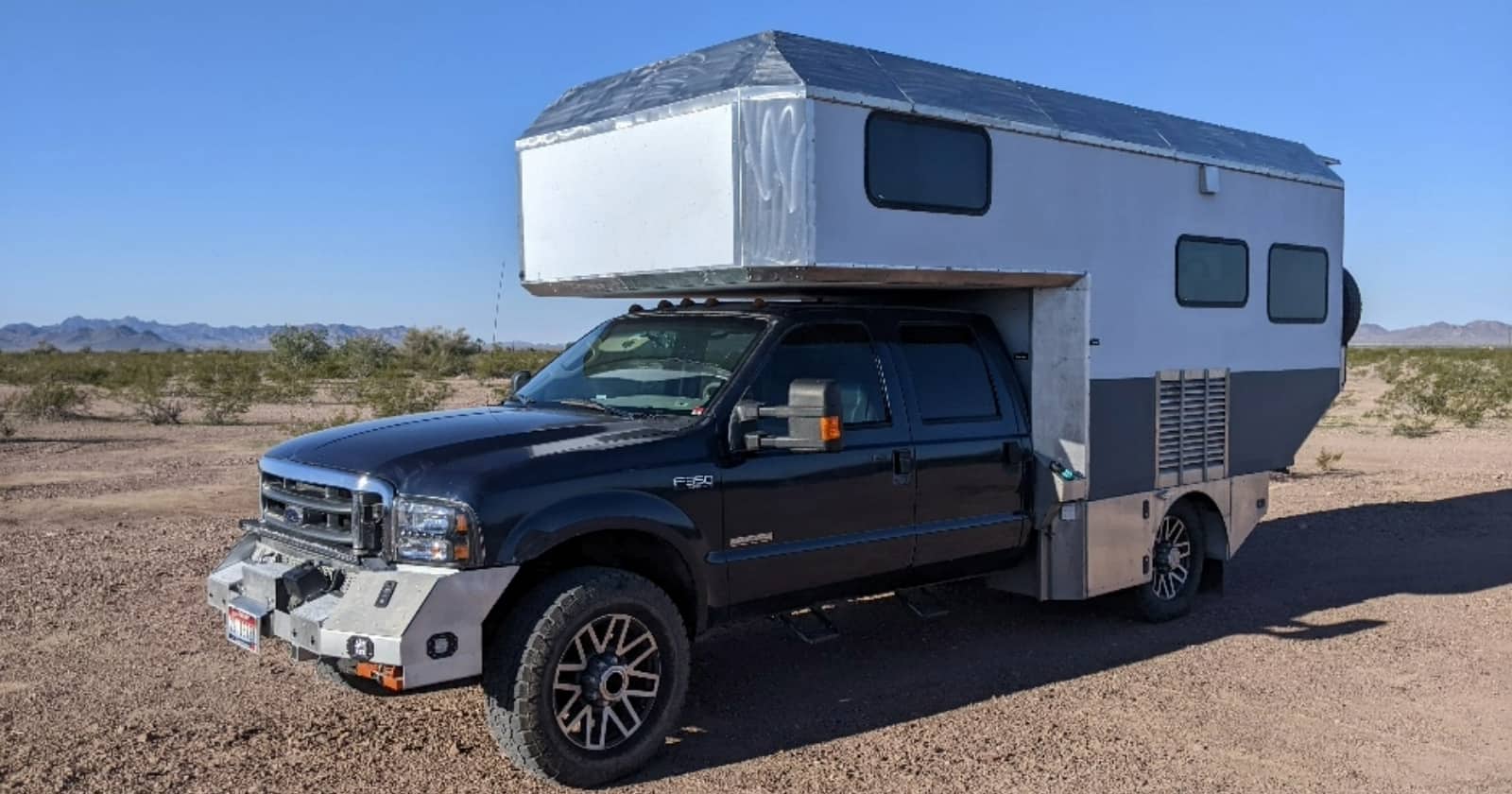
Heated Mattress Pads & Other DIY Alternatives For A Warm RV Bed
Venturing out in an RV during the colder months provides campers with serene snow-draped landscapes and fewer crowds. However, the beauty of winter camping can quickly diminish if you’re constantly battling with the cold, especially when trying to sleep.
One of the primary areas where warmth is essential is your bed. While there are commercial options like heated mattress pads, DIY enthusiasts can also find plenty of alternative solutions to ensure a warm and cozy night. In this comprehensive guide, we’ll delve deeper into the advantages of heated mattress pads and explore numerous DIY alternatives for a warm RV bed.
Understanding heated mattress pads
Heated mattress pads have been a savior for many during cold nights, providing a consistent source of warmth. They have evolved over time to become more energy-efficient and safe for users.
Pros and features:
- Customizable temperature control: Modern heated mattress pads allow users to select their preferred warmth levels. This means whether you want a lightly warmed bed or a toasty haven, you have control.
- Advanced safety measures: With technological advancements, these pads now come with features like auto shut-off, ensuring they don’t overheat or become a fire hazard.
- Uniform warmth distribution: One of the primary advantages is the even distribution of warmth, ensuring every corner of your bed is comfortably warm.
- Energy efficiency: These pads consume less power, making them ideal for RVs where energy resources might be limited.
Cons:
- Initial cost: High-quality heated mattress pads can be a bit on the pricier side.
- Dependence on power: If you’re planning on boondocking or camping off-grid, you’ll need a reliable power source.
Venturing into DIY warmth: Alternatives for a cozy RV bed
For those who love crafting solutions or are looking for more traditional warmth sources, there’s a plethora of DIY alternatives available.
1. DIY Wool or Fleece Mattress Topper
Nothing beats the organic warmth provided by materials like wool or fleece. Here’s how you can create your own mattress topper.
Materials:
- Wool or fleece fabric
- Sewing machine or needle and thread
Instructions:
- Measure your RV bed dimensions.
- Add a couple of inches to the measurements and cut your fabric.
- Fold and sew the edges to prevent fraying.
- Position the topper atop your mattress.
Benefits
Wool and fleece have natural insulating properties. This topper won’t just add warmth but also an added layer of cushioning.
2. The power of thermal blankets
Originally designed for space exploration, these thermal blankets have been effectively adapted by RVers to combat the cold and ensure a warm night’s sleep.
Directions:
- Lay the blanket beneath your bed sheet, ensuring its reflective side faces upwards.
- Fasten it in place using sheet straps or clips.
Benefits:
Thermal blankets trap body heat, reflecting it back to you, ensuring minimal warmth is lost to the cold mattress.
3. Homemade Rice Heating Bags
An age-old method, these rice bags are easy to make and provide spot warmth.
Materials:
- Cloth or durable sock
- Uncooked rice
- Optional: Essential oils for fragrance
- Microwave
Instructions:
- Fill the cloth or sock with rice, leaving some space at the top.
- Introduce a few drops of essential oil if desired.
- Securely stitch the cloth or tie the sock end.
- Before bedtime, microwave the bag for 1-2 minutes and place them in your bed.
Benefits
They’re reusable, and the retained heat can make your bed inviting during cold nights.
4. Under-mattress insulation
Cold often permeates from the RV floor or the storage space under the bed. Combat this by adding an insulation layer.
Materials:
- Foam board insulation or reflective bubble insulation
Directions:
- Measure the bed’s base.
- Cut the insulation according to the dimensions and place it beneath the mattress.
Benefits
This method effectively blocks cold transfer, ensuring the mattress remains relatively warm.
5. Use flannel sheets
Switch your regular sheets for flannel during winters. Their dense weave retains warmth better.
6. Craft draft stoppers
Drafts can sneak in from unexpected places. Draft stoppers can be your first line of defense.
Materials:
- Fabric
- Sand or rice
- Sewing essentials
Instructions:
- Measure your bed’s length and cut fabric accordingly.
- Sew it into a tube and fill with sand or rice.
- Seal the open end and place the draft stopper at the bed’s foot or sides.
Benefits
Beyond warmth, they can also act as soft footrests.
7. The classic hot water bottle
Sometimes, traditional methods outshine modern solutions. The hot water bottle is one such example.
Directions:
- Fill a rubber hot water bottle with boiling water.
- Carefully seal it and place it in your bed a few minutes before you sleep.
Benefits
It’s a quick solution that offers hours of warmth, ensuring you sleep comfortably.
8. Embrace layered bedding
Layering is a straightforward approach. Add blankets, comforters, and duvets to trap air and warmth.
Conclusion
Winter RVing can be a magical experience, with landscapes transformed and fewer crowds. However, ensuring comfort during the chilly nights is crucial. While heated mattress pads are a fantastic and consistent source of warmth, there’s a world of DIY solutions waiting to be explored.
From the natural insulation of wool to the gentle warmth of a hot water bottle, there’s a warmth solution for every traveler. Equip your RV bed with these solutions, and you can focus on enjoying the winter wonderland outside.
Get tips from other RVers
One of the best parts about RVing is engaging with the community of traveling enthusiasts. iRV2 forums allow folks to chat with other RVers online, and get other perspectives on everything RVing, including products, destinations, RV mods, and more.




If you’re not going to be connected to shore power or using a generator, then your 120V heated blanket will be running off of your inverter. Some heated blankets and heating pads will not work on non-sine-wave inverters. The full sine wave inverters are more expensive and less energy efficient.
Winter camping depends on where you do it. It gets cold everywhere. But if you think that a warm bed is all you need to camp in below freezing temperatures, you are mistaken. RVs are not designed for winter weather camping. You can get frozen pipes, hoses and dump valves, ice on the roof, slide-outs and awnings, and you can’t open outside compartments when their hinges are frozen.
If you’re interested in a heated mattress pad, check out the low voltage ones. Not only do they use less power, but the heating wires are much thinner so you hardly feel them. We have been using one in the 5th wheel camper for several years during cold weather. Just turn it on about 15 minutes before bedtime and enjoy your pre-heated cozy bed.